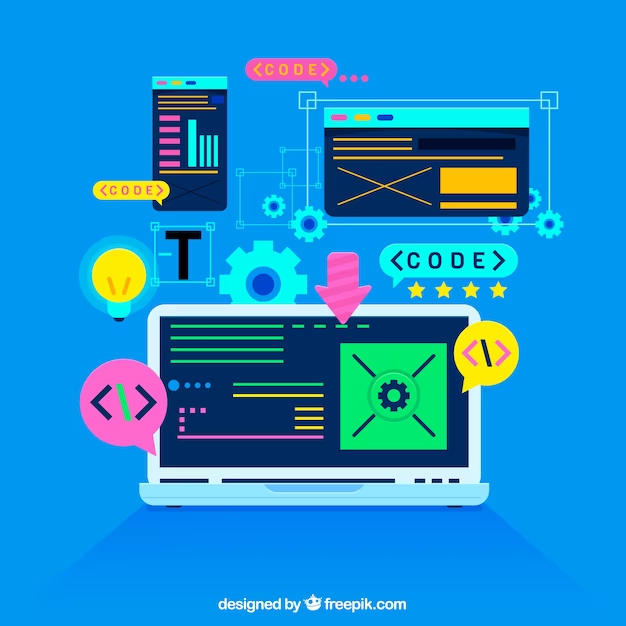The Path of a Full Stack Developer: From Front-end to Back-end
In the ever-evolving landscape of technology, the role of a Full Stack Developer has become increasingly vital. A Full Stack Developer is someone who possesses a comprehensive understanding and proficiency in both front-end and back-end development. This skill set allows them to work seamlessly on all aspects of a web application, from user interface design to server-side scripting and database management.
In this blog, we will explore the journey of a Full Stack Developer, detailing the skills required, the learning path, and the importance of Full Stack Developer Certification and Certification. Whether you're a budding developer or an experienced professional looking to broaden your expertise, understanding the path of a Full Stack Developer can provide valuable insights.
The Front-End Journey
The journey of a Full Stack Developer often begins with front-end development. The front end is the part of a web application that users interact with directly. It involves creating visually appealing and user-friendly interfaces. Key technologies and languages associated with front-end development include HTML, CSS, and JavaScript.
HTML and CSS
Mastery of HTML and CSS is the foundation of front-end development. HTML (Hypertext Markup Language) provides the structure of a web page, while CSS (Cascading Style Sheets) is used for styling and layout.
JavaScript
JavaScript is a crucial scripting language for dynamic web content. It enables developers to create interactive and responsive features on a webpage. As a Full Stack Developer, a strong understanding of JavaScript is essential for both front-end and back-end development.
Front-End Frameworks
Learning popular front-end frameworks like React, Angular, or Vue.js can significantly enhance a Full Stack Developer's capabilities. These frameworks streamline the development process and facilitate the creation of complex user interfaces.
Transitioning to Back-End Development
Once a developer has a solid foundation in front-end technologies, the next logical step is to venture into back-end development. The back end manages data, and server-side logic, and ensures smooth communication between the server and the front end.
Server-Side Programming
Back-end development involves working with server-side languages such as Node.js, Python (Django or Flask), Ruby (Ruby on Rails), or Java. These languages enable developers to handle requests, process data, and interact with databases.
Databases
Understanding databases is crucial for a Full Stack Developer. Common databases include MySQL, PostgreSQL, MongoDB, and more. Knowing how to design and query databases is essential for building robust and scalable applications.
APIs (Application Programming Interfaces)
Full Stack Developers need to grasp the concept of APIs, which facilitate communication between different software systems. RESTful and GraphQL APIs are commonly used in web development.
Bridging the Gap: Becoming a Full Stack Developer
The journey from front-end to back-end is about creating a seamless connection between these two realms. A Full Stack Developer must be proficient in both domains, ensuring that the user interface interacts effectively with the server-side logic. Here are some key aspects of bridging the gap:
Version Control
Full Stack Developers commonly use version control systems such as Git to manage and track changes in their code. This ensures collaboration with other developers and the ability to roll back to previous versions if needed.
Deployment and Hosting
Understanding how to deploy and host applications is crucial. Platforms like Heroku, AWS, or Azure provide solutions for deploying and hosting web applications.
DevOps Practices
Embracing DevOps practices is beneficial for Full Stack Developers. This includes automating processes like testing, building, and deployment to ensure a smooth and efficient development lifecycle.
Importance of Full Stack Developer Online Training and Certification
As technology advances, staying updated with the latest tools and practices becomes imperative for developers. Full Stack Developer Online Training and Certification programs offer a structured learning path, covering a wide range of topics relevant to both front-end and back-end development.
Comprehensive Curriculum
Online training programs often cover a comprehensive curriculum, ensuring that developers gain proficiency in a diverse set of technologies and tools. This structured approach accelerates the learning process.
Hands-On Projects
Practical experience is vital for skill development. Online training programs often include hands-on projects that allow developers to apply their knowledge in real-world scenarios, enhancing their problem-solving skills.
Mentorship and Support
Many online training platforms provide mentorship and support from experienced professionals. This guidance can be invaluable, offering insights into best practices and industry standards.
Conclusion
Becoming a Full Stack Developer is a rewarding journey that requires dedication, continuous learning, and hands-on experience. Transitioning from front-end to back-end development enables developers to create end-to-end solutions, making them highly versatile in the rapidly changing tech landscape.
Whether you're a self-taught developer or someone looking to enhance your skills, the path of a Full Stack Developer is both challenging and fulfilling. Consider enrolling in Full Stack Developer Online Training and Certification programs to accelerate your learning and stay ahead in this dynamic field. Embrace the evolving world of web development, and embark on a journey that opens doors to endless possibilities.




Comments
Post a Comment